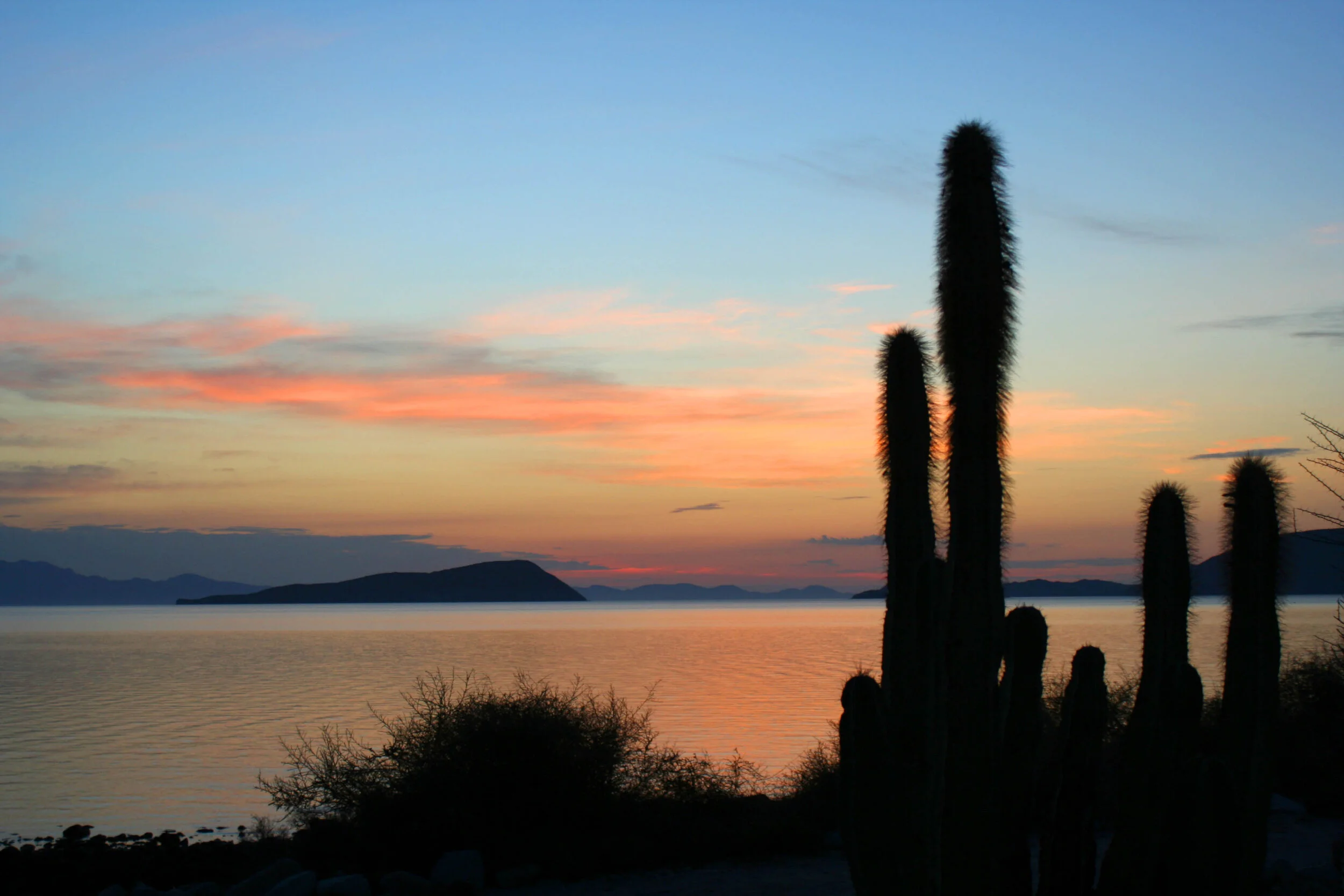On the walk back to the condo and while looking at the neighboring houses, I thought how strange it was (and what a feat of engineering, really) that these communities pop up all over Baja seemingly out of nowhere and in the middle of nowhere, so far from any central hub of a town or city. And most, if not all, have modern amenities--running water, electricity, cable, even wifi. On previous trips, calling home was unheard of. Checking email? Forget it. You were MIA for the duration of your stay. Completely disconnected. I prefer it that way. What happened to the simple life? Pura vida? Beachfront palapas, sleeping in the sand, catching fish or diving for rock scallops to feed yourself and your family, trucking in and storing water in 50-gallon drums, rise with the sun, sleep when its dark. . . . For such a long time this was, in my opinion, part of the allure of Baja: its harshness. You had to be okay with roughing it and going a few days or more without a shower, or devise creative ways to entertain yourself to pass the hottest part of the day. Sure, it was not an existence of convenience and undoubtedly many will disagree with my opinion. One travels to Baja to do just that: go to Baja. Immerse yourself in the sights, the culture. Why the need to bring home with you? Is it just a matter of comfort? How many resources are wasted for these kinds of conveniences? I can only imagine the waste associated with larger resorts and hotels along the cape.
Baja is far from being Cabo; it is not Cancun. I hope it never will be, yet I can't help but fear it's evolution into a tourist destination is unstoppable.
Yes, the local economy benefits from tourism, but at the cost of Baja, its natural resources, flora and fauna. Large populations of tourists demand modern conveniences. This could mean a depletion of naturally occurring fresh water sources, or desalination plants for fresh water (at the cost of plant and animal life on land as well as already-sensitive marine life due to the resulting toxic brine), unsustainable (and perhaps unregulated) fishing practices, erosion, habitat destruction for fragile endemic species... the list goes on.
But is there a way to meld ecological preservation and tourism more seamlessly? Or does opulence breed opulence? Will one always outweigh the other?
The World Conservation Union defines eco-tourism as "Environmentally responsible travel to natural areas, in order to enjoy and appreciate nature (and accompanying cultural features, both past and present) that promote conservation, have a low visitor impact and provide for beneficially active socio-economic involvement of local peoples."
One of our goals in making this film was to capture the beauty of Baja as it was at the turn of the last century, how it is now, and show what will happen if this region is forever at the mercy of those that want to exploit it. We are, at our core, eco-tourists, wanting to make as small an environmental impact as we can, enrich ourselves with Baja's culture, and appreciate it's beauty. We also want to share with the world all that defines Baja in hopes that our passion for it is contagious. To quote a number of conservation organizations, we protect the places we are most passionate about. Maybe we strike a chord in someone, or in a group of people. Maybe we bring to the surface all of the change over the last century, or of the importance of the work that Nelson and Goldman did for Baja's natural history. Maybe. We remain hopeful.





